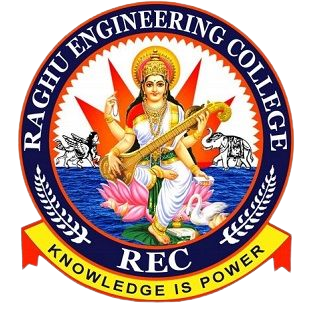Pre Conference Workshop
Fundamentals, Analysis, Design, Software, Hardware fabrication, Test & Qualification of
Advanced Antennas for Space, Vehicular and Ground Applications
We are excited to announce a pre-conference workshop as part of the World Antenna and Microwave Symposium (WAMS) 2024, focusing on the intricate world of advanced antennas. This workshop will be an invaluable opportunity for researchers, engineers, and enthusiasts to dive deep into the realm of antennas for various applications, including space, vehicular, and ground-based systems.
Date: 28th February, 2024
Time: 9:30 AM to 5:00 PM
Venue: Raghu Engineering College, Seminar Hall
Registration Fee:
Non-IEEE: Rs 750/-
WAMSS Member / IEEE Student Member / IEEE Professional Members : Rs 500/-
Catering: Lunch and snacks will be provided during the workshop
To register for the Workshop go to bottom of the page
Featuring Lectures by :

Dr. Sudhakar Rao
IEEE Life Fellow, President & CEO, RaoS Consultants LLC, USA

Dr. Nacer Chahat
IEEE Fellow, System Engineer, NASA/JPL, USA

Dr. Clency Lee-Yow
CTO, Vitesse/ Custom Microwave Inc., USA

Dr. Gaurangi Gupta
IEEE APS YP Ambassador, Antenna Engineer, NASA/JPL, USA
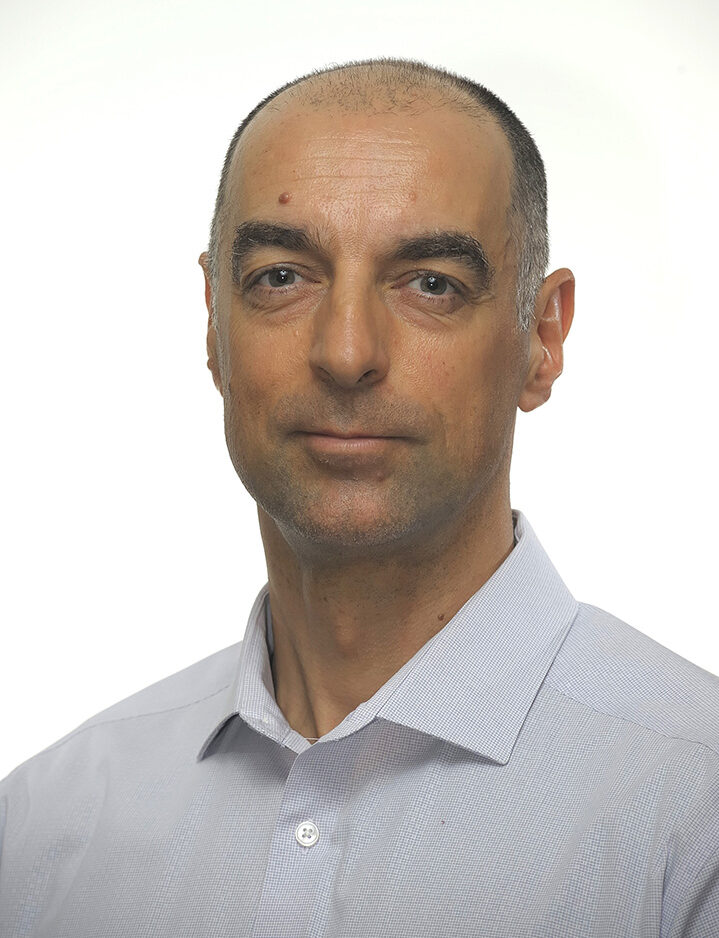
Dr. Paolo Focardi
IEEE Senior Member, Senior RF Microwave Engineer, NASA/JPL, USA
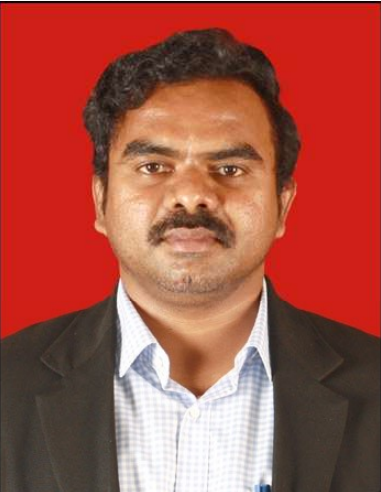
Dr. Ch Anil Kumar
Scientist-E, Naval Science and Technological Laboratory (NSTL), Visakhapatnam

Dr. Shiv Narayan
CSIR-National Aerospace Laboratories (CSIR-NAL), Bangalore

Dr. Jonathan Sauder
NASA/Jet Propulsion Laboratory

Mr. Abhishek Tiwari
Product manager for Antenna, RF and Radar applications at MathWorks.
Also features demonstrations by :


President & CEO, RaoS Consultants LLC, USA
Dr. Sudhakar Rao is the founder & CEO of RaoS Consultants LLC providing technical consultancy to various companies in USA, Canada, Europe, and India. Dr. Rao retired from Northrop Grumman Space Systems in 2022 where he worked as the Senior Technical Fellow and provided technical leadership to all divisions of Northrop Grumman in the areas of antennas and payload development for various key programs. In the past, he also worked at Lockheed Martin, Boeing Satellite Systems, Spar Aerospace Ltd (now MDA), LRDE Bangalore & ECIL Hyderabad. Dr. Rao received B. Tech from REC Warangal, M. Tech from IIT Kharagpur, Ph. D from IIT Madras and post-doctoral fellowship from Univ. of Trondheim, Norway. He worked as a research associate at University of Manitoba, Canada during 1982-1983. Over the past 40 years, he developed innovative antenna systems for 90 satellites and 10 air/vehicular/ground systems. His work on development of radiation templates for complex satellite antenna patterns for interference analysis was adopted and recommended by the International Telecommunication Union (ITU)/CCIR in 1992 as the world-wide standard for satellite manufacturers and operators. He authored over 230 technical papers and was awarded 58 patents (52 US & 6 European) and 5 trade secrets. His fundamental work on the design of multiple beam antennas in 1999 has been used by satellite industry world-wide. He authored and co-edited three text book volumes on “Handbook of Reflector Antennas and Feed Systems” that were published in June 2013 by the Artech House Publishers.
Dr. Rao is an IEEE Life Fellow, a Fellow of IETE, and a Life Fellow of WAMS Society. He received several awards including the IEEE Benjamin Franklin Key Award in 2006, Delaware Valley Engineer of the Year in 2008, Asian American Engineer of the year award in 2008, IEEE Judith Resnik Technical Field Award in 2009 for pioneering work in aerospace engineering, Boeing’s Special Invention awards in 2001 & 2002, Lockheed Martin’s President Award in 2005, 2007 & 2008, 2009, IEEE Region 6 Outstanding Engineer Award for 2017 and the 2017 Northrop Grumman’s President Award for innovations and contributions to key programs. He received Distinguished Alumni Professional Achievement Award from his alma mater NIT Warangal in 2016 and IETE’s Prof. S.N. Mitra Memorial Award in 2016. Recently, he received the 2020 IETE’s Biman Behari Sen Memorial Award.
Dr. Rao served as the Distinguished Lecturer for the IEEE APS and as an AdCom member for IEEE APS. He was the founder and Chair for the IEEE APS “Industry Initiatives Committee” during 2011-2015, IEEE APS Fellow Evaluation Committee member during 2015-2017, founder and Editor of the IEEE Antennas & Propagation Magazine’s “Antenna Applications Corner”, Associate Editor for the IEEE Transactions on Antennas & Propagation, and Associate Editor of IEEE AWPL. He is the founding executive committee member of the WAMS series of conferences in India. Dr. Rao delivered invited and keynote talks for more than 50 conferences world-wide. He served as the IEEE Fellow Committee member for 2020 & 2021 and now serving for 2023 & 2024. He instituted IETE – Dr. Sudhakar Rao Award in 2020 to recognize and honor outstanding antenna engineers and established awards for best outgoing male & female students at Raghu Institute of Technology, Visakhapatnam. Dr. Rao is the Distinguished Visiting Professor at IIIT DM Kancheepuram, Chennai, India and is also serving as the member of School Research Board of Vignan University, Guntur, India.
Title of The Talk:
''Advanced Antenna Designs for Space, Air & Ground Communications: An Industry Perspective''
Abstract:
Antennas are “Eyes and Ears” of modern-day communication systems. They are key components of any communications link providing the coverage, gain to close the communication link, bandwidth, capacity/data rates and polarization. Antenna engineering is a highly specialized skill in the industry and the role of antenna engineer is to develop appropriate products and qualify them for any intended application. Antenna has to meet several requirements simultaneously and often times the design becomes a difficult task for engineers. Simple designs are elegant designs! Antenna designs could be simplified even with complex requirements if the fundamentals are well understood. This talk will cover antenna applications, various types of antennas, fundamentals, and design methodologies for reflector antennas, omni-antennas, UWB antennas and phased array antennas. Antenna hardware for satellites, aircrafts, vehicles and ground communication systems will be discussed. Industry perspective of developing antenna products for different applications is emphasized.
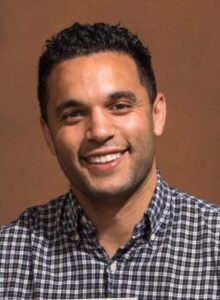
IEEE Fellow, System Engineer, NASA/JPL, USA
Nacer Chahat is a Senior Antenna/Microwave Engineer and Systems Engineer with the National Aeronautics and Space Administration (NASA) Jet Propulsion Laboratory (JPL), California Institute of Technology, Pasadena, CA. In 2021, he became the youngest Fellow of IEEE.
He received a Master’s degree in electrical engineering from the Ecole Supérieur d’ingénieurs de Rennes (ESIR), Rennes, France, in 2009; a Master’s degree in telecommunication and a Ph.D. degree in signal processing and telecommunications from the Institute of Electronics and Telecommunications of Rennes (IETR), University of Rennes 1, Rennes, France, in 2009 and 2012, respectively.
He has authored and coauthored more than 150 technical journal articles and conference papers, has written four book chapters, and holds several patents. He wrote the textbook entitled “CubeSat Antenna Designs” published by Wiley describing all of his innovative work on CubeSat antennas developed at JPL. He has developed key antenna technologies enabling new types of mission for Deep Space Exploration. He is co-inventor of the iconic deployable reflectarray used on the Mars Cube One (MarCO) mission, the world’s first interplanetary CubeSat. He also co-invented the award-winning Raincube mesh reflector antenna used on the first active radar on a CubeSat. He also invented the Europa Lander antenna enabling direct communication from the surface of Europa (600 million km away), capable of surviving the harsh environment of icy moon of Jupiter.
Dr. Chahat was the recipient of the 2011 CST University Publication Award, the 2011 Best Paper Award from the Bioelectromegnetics Society, and the IEEE Antenna and Propagation Society Doctoral Research Award in 2012. He was awarded by Foundation of Rennes 1, Best Ph.D. of University of Rennes. In 2013, he received the Best Ph.D. thesis in France in electrical engineering awarded by club EEA. In 2013, he was awarded the Airbus Group Foundation’s Best Thesis Prize in France. In 2015, he received a French Early Career Award for Researchers (Prix Bretagne Jeune Chercheur) for his significant scientific contribution in his early career. In 2017, he received the IEEE A. Schelkunoff Transactions Prize Paper Award. In 2017, he also received the prestigious Lew Allen Award for Excellence awarded by NASA’s Jet Propulsion Laboratory “for demonstrated unique talent as a leader in rapid spacecraft antenna development and telecom systems engineering”. In 2018, he was awarded the Future Technology Leader Award by the Engineers’ Council and the NASA Early Career Achievement Medal Award. In 2020, he received the IEEE Outstanding Engineer of the Year from IEEE Region 6. In 2021, he was awarded the IETE Dr. Sudhakar Rao Award by the Institution of Electronics and Telecommunication Engineers (IETE). In 2021, he became Fellow of IEEE for his contribution to spacecraft antennas for interplanetary exploration. He is also Life Fellow of the Wireless, Antenna & Microwave Society (WAMS). In 2023, he became AIAA Associate Fellow for exceptional leadership and innovation in spacecraft antennas, telecommunication, and system engineering that have enabled NASA Earth science and planetary missions.
Title of The Talk:
''Antenna Designs Shaping the Future of Space Exploration'
Abstract:
In this presentation, we will delve into recent advancements in the field of antenna design and propagation modeling, with a specific focus on their crucial role in Space Exploration. Our exploration will be richly illustrated through a spectrum of successful NASA missions.
A notable achievement from NASA’s Jet Propulsion Laboratory is Mars Ingenuity, the first-ever Mars helicopter. Enabling seamless data transmission to and from a Mars Rover situated up to 1 kilometer away, this groundbreaking technology relies on intricate antenna designs and propagation techniques tailored for the Martian landscape. Meticulously executed flights have provided valuable data for rigorous assessments, encompassing factors such as shadowing effects, multipath scenarios, polarization loss, and signal fading, demanding precision in modeling both the Mars Rover and the helicopter.
In the second part of our presentation, we will delve into the forefront of antenna innovations tailored for Cubesats, Rovers, and Landers. NASA’s Jet Propulsion Laboratory has been instrumental in driving the rapid evolution of CubeSat antennas, introducing cutting-edge deployable designs across X- and Ka-band frequencies. A notable illustration of these advancements is the Mars CubeSat One (MarCO), featuring a deployable X-band reflectarray that played a vital role in transmitting critical data back to Earth during the Entry Descent and Landing (EDL) phase of NASA’s Insight mission. Our exploration will further uncover the remarkable strides made in the development of a Ka-band mesh reflector for the Raincube mission, distinguishing itself as the world’s inaugural active radar-equipped CubeSat. Post-deployment in orbit, Raincube has meticulously gathered valuable rain precipitation data globally for an impressive two-year duration. Concluding this segment, we will shed light on the Europa Lander mission concept, where a highly efficient high-gain antenna takes center stage, showcasing its resilience in withstanding the extreme cryogenic and high radiation conditions characteristic of Europa’s surface. We will also discuss recent progress on UAV snow radar, radiometer for fire detection, and other innovative concepts.
In a realm where innovation presents formidable challenges, this presentation underscores how creativity has been the driving force behind pioneering missions, unlocking new frontiers, and reshaping the landscape of space exploration.
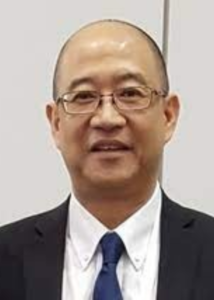
CTO, Vitesse/ Custom Microwave Inc., USA
Dr. Clency Lee-Yow graduated from Queen Mary College in London, UK with a B.Sc. and a Ph.D. in Electrical Engineering. He spent one year with the university as a research assistant before joining Com Dev International in Cambridge, Ontario, Canada where he worked as a senior engineer designing a variety of reflector antenna feeds and microwave components for satellite communications. In 1994, he joined Custom Microwave Inc. (CMI) and took over as VP of operations in 1995. He acquired CMi in 1999 and became President and CEO. Since then, he has transformed the company from a fabrication service provider into a major supplier of custom designed high-performance antennas with a reputation for innovation and high quality. CMi’s portfolio of heritage custom antennas include reflectors, wideband high power Low PIM feeds, large multi-beam feed arrays, direct radiating arrays, complex multi-band feeds, microstrip antennas, and ultra-Wideband antennas. These antennas can be found on a wide variety of platforms including commercial, defense, remote sensing, and space exploration satellites, ground stations, airborne and ground vehicles, and manpacks.
In 2023, he sold CMi to Vitesse Systems where he remains as CTO. Dr. Clency Lee-Yow has authored or co-authored over 24 technical publications and been awarded 8 patents.
Title of The Talk:
''Vitesse Systems Antenna Technologies and Capabilities"
Abstract:
Vitesse Systems acquired Custom Microwave Inc., CMi, in 2023 and has since expanded its portfolio of antenna solutions with significant investments in design, manufacturing, and test capabilities. This talk aims to provide an overview of how Vitesse uses its design, manufacturing, and test toolboxes to provide unique antenna solutions for space, air, and ground applications. Some examples include Multi-Band Feeds operating over eight distinct communication bands and two tracking bands, large feed clusters with integral Beamforming Networks for Multi-Beam Antenna systems, its patented quad-band petal reflector antenna, and its V/W band reflector antenna. RF and Mechanical engineers at Vitesse have direct access to in-house manufacturing capabilities such as 3-D metal printing, Vacuum Brazing, Dip Brazing, electroforming, electroplating, EDM, and CNC machining. They are also involved in validating their designs via in-house test capabilities such as spherical and planar near-field ranges, vibration table, thermal chambers, and thermal PIM (Passive Intermodulation) chamber.
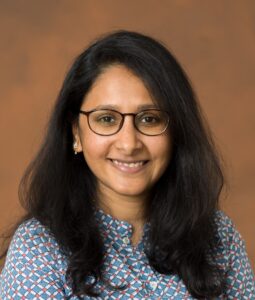
IEEE APS YP Ambassador, Antenna Engineer, NASA/JPL, USA
Dr. Gaurangi Gupta is currently an RF Microwave Engineer at the NASA Jet Propulsion Laboratory ( California Institute of Technology, USA. She is currently working on the antenna development for radio telescope, radar systems and satellite communication applications. She completed her Masters and PhD in Electrical Engineering from the Indian Institute of Technology Kanpur, India in 2014 and 2020 respectively. During her PhD, she worked on the design and development of low profile antennas with meta surface reflectors. She worked as a research associate at IIT Kanpur during 2020 2021 where she worked on phased array antennas for satellite on the move application under an industry collaborated project. Under the Indo US Fellowship during 2018 2019 she worked as a visiting scholar at the Remote Sensing Center, University of Alabama, where she contributed to the ongoing radar development. She has published multiple papers in journals and conferences. She is a recipient of the URSI Young Scientist Award, multiple best paper awards and travel grants in IEEE conferences. She is currently the IEEE AP S Young Professional Ambassador.
Title of The Talk:
''Innovative Antennas for Satellite Telecom, Radar Systems and Radio Telescope"
Abstract:
The talk discusses the innovative antennas being developed for various telecom, radar and radio telescope applications. A 350 m diameter reflector antenna is being developed as a detector for the Lunar Crater Radio Telescope Once deployed, it will be one of the largest filled aperture telescopes The RF design and development thus involve complexities in terms of structural constraints and environmental interactions, which will be discussed in the talk. All metal circularly polarized patch excited cup antenna arrays being developed for direct to Earth communication from the potential Europa Lander and for Lunar missions These antennas project the capability to survive high power levels, cryogenic temperature and high radiation on the Europa and Lunar surface The optimum placement of these antennas will also be discussed to maximize the coverage hours and data volume per day. All metal meta-surface antennas have been designed for Ku band ice sounding radar and W-band radiometer. These antennas form an integral part of the development for future space missions. High gain Ka-band reflector antennas with feed clusters are being developed for the INCUS Earth Science Mission Radar. Based on the overlap and gain requirements, unique feed and waveguide routing has been developed using additive manufacturing, which will also be discussed as part of the talk.
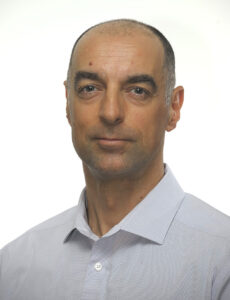
IEEE Senior Member, Senior RF Microwave Engineer, NASA/JPL, USA
Dr. Paolo Focardi is a Senior RF Microwave Engineer at NASA Jet Propulsion Laboratory, California Institute of Technology. He received a PhD in Computer Science and Telecommunication Engineering from the University of Florence, Italy, in 2002. Early in his career, he worked for the Italian Space Agency and collaborated with NASA and DLR for the Shuttle Radar Topography Mission (SRTM). In 2001 he visited NASA’s Jet Propulsion Laboratory to work at the development of an accurate electromagnetic model of THz detectors between 600 GHz and 2.5 THz. In 2002, after completing his PhD, he joined the staff of JPL as a Post-Doc and then became Staff Engineer in 2004. Between 2004 and 2009 he worked on a project to remotely detect human vital signs which led to the creation of two start-up companies. In 2008 he briefly supported the development of two antennas for JUNO and then joined the team developing the instrument antenna for SMAP. He was the first to model the entire SMAP observatory to get very accurate predictions of the radiation patterns which was never measured on the ground. He was also responsible for the design and delivery of the COWVR instrument antenna, a flight project in collaboration between JPL and the US Air Force to measure wind speed over the ocean, which is currently flying on the ISS. Starting in 2013 he was responsible for the delivery of the feed assembly for NISAR, a project in collaboration between NASA and ISRO, the Indian Space Research Organization, which is currently in its final phases of integration and testing before launch, expected early in 2024. He’s currently working on INCUS, an Earth science mission aimed at measuring how water vapor and droplets move inside tropical storms with three satellites flying in close formation in low Earth orbit equipped with Ka-Band radars and deployable mesh reflectors. His work is focused on analytical and numerical methods in electromagnetism for the analysis and design of RF circuits and antennas. He has authored and co-authored over 70 journal and conference publications including two book chapters about reflector antennas.
Title of the talk:
''Antenna Systems for Space Applications at NASA Jet Propulsion Laboratory''
Abstract:
Antenna developments for space applications has a long history at NASA Jet Propulsion Laboratory. Starting from the 70’s, Voyager, Galileo, Cassini, SRTM and more recently Aquarius, SMAP, SWOT, NISAR and INCUS are just a few major flight projects that required the design and development of very complex antenna systems for telecom, radar and radiometric applications. They were, and in most cases still are, the state of the art in antenna design for space applications. In the past we mostly relied on relatively simple RF models and formulations and did a considerable amount of prototype testing to validate antenna performance. In recent years RF modeling tools like HFSSTM, GRASPTM and a few more, have reached capabilities that were unimaginable just a few years back. At the same time, computer power and available memory have been increasing steadily. Thanks to this fertile ground it’s now possible to run extremely complex RF simulations of very large structures in a relatively short time with very good results. This presentation will guide the audience through a few examples of flight projects where very complex RF models have provided extremely accurate results and allowed the development of very complex instruments, some of which are still flying today.
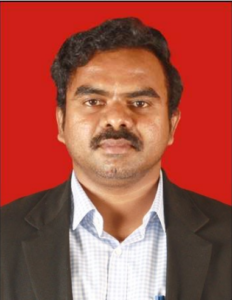
Scientist-E, Naval Science and Technological Laboratory (NSTL), Visakhapatnam
Dr. Ch Anil Kumar received the bachelor’s degree in electronics and communications engineering from Andhra University, Visakhapatnam, India, in 2005, and the master’s degree’s in radio frequency design and technology from IIT Delhi, New Delhi, India, in 2012. He completed his Ph.D. in multimode antenna arrays from the Centre for Wireless Innovation, ECIT Research Institute, School of Electronics, Electrical Engineering and Computer Science, Queen’s University Belfast, Belfast, U.K. in 2020. In 2007 he joined the Defense Research and Development Organization (DRDO), Ministry of Defence, Government of India, as a Scientist. He has been involved in various activities such as antenna and radome design for airborne applications, antenna, radome, and RCS calibration and measurements both in near and far-fields. He was actively involved in the successful installation of near-field test facility with the RCI Lab, Hyderabad, India. He is now with Naval Science Science and Technological Technological Laboratory Laboratory (NSTL) Visakhapatnam, where is currently Scientist-E. His current research interests include antenna and radome design, RCS mitigation techniques for RF-Stealth, beamforming techniques, retro-arrays, and FSS. Currently, he is the Division Head (RCS) working on Futuristic Applications of stealth Technology. Anil was the recipient of a fully funded Ph.D. Scholarship(University Studentship) from EPSRC U.K. for three years in2016. Anil was also the recipient of the SPRC EEECS best paper award from QUB, U.K 2020. Anil is a Fellow IETE, Fellow IE(India), and a Senior Member of IEEE. He was Ex-coM member of IEEE APS/MTT/EMC Hyderabad Joint-Chapter. He is Secretary, IEEE VizagBay Section. He is Reviewer of IETMAP and Electronics Letters Journals and EuCAPConference.
Title of the talk:
''Multimode Antenna Arrays : Beamforming under hardware constraints.''
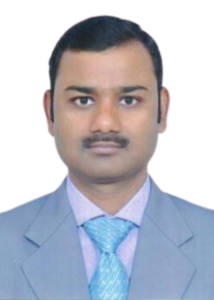
CSIR-National Aerospace Laboratories (CSIR-NAL), Bangalore
Dr Shiv Narayan obtained the Ph.D. degree in Electronics Engineering from Indian Institute of Technology (IIT-BHU), Banaras Hindu University, Varanasi, India in August 2006. He is associated with the Centre for Electromagnetics (CEM) of CSIR-National Aerospace Laboratories (CSIR-NAL), Bangalore, India since May 2008. Currently, He is holding the position of Senior Principal Scientist at CEM, CSIR-NAL. Earlier, he held the position of Scientist-B in SAMEER (Society for Applied Microwave Electronics Engineering and Research), Kolkata, India, during the period March 2007-May 2008, where he was actively involved in the pattern synthesis of planar phased array antennas. His research interests are broadly in the field of Electromagnetic applications and the topics include: Frequency selective surfaces (FSS), RAS, Radome, metamaterials, numerical methods in electromagnetics, antennas, pattern synthesis of antenna array, and EM material characterizations. Particularly, he is working on the design and analysis of FSS structures based on advanced numerical techniques (i.e. MM-GSM, TLTMM, and FDTD method) for aerospace applications for the last eight years. Dr Shiv is the author/ co-author of over 100 technical documents including peer reviewed journal and conference papers. He has published Technical Briefs (Books) with Springer on various topic such as ‘FSS Technology for the Design of High Performance Antennas’ and FDTD modeling inside Microwave Cavities. Dr Narayan was awarded with “Excellence Award in Research” for the year 2018-19 from CSIR-NAL for his significant contributions to the Electromagnetic Design and Development of FSS structures for Airborne Applications such as radomes, RAS, and antennas. He was awarded with prestigious CSIR- Raman Research Fellowship for the year 2019- 20 and visited College of Engineering, San Diego State University, San Diego, CA, USA. Recently He was awarded with IETE Dr Sudhakar Rao Award for the year 2022 for significant contributions in the area of FSS technology for aerospace applications. He is the reviewers of several prestigious International Journals published by IEEE Transactions on AP, IEEE AWPL, IEEE MTT, IEEE Sensors, Elsevier, Cambridge University Press, Springer Nature, and Tech Science Press, etc. He is a Fellow member of IETE, Life Senior member of WAMS Society, and life member of ISAMPE, India.
Title of the talk:
''Fundamentals of FSS structures and its Applications''
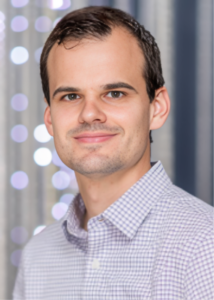
NASA/Jet Propulsion Laboratory
Dr. Jonathan Sauder is a group lead at NASA Jet Propulsion Laboratory, where he enables technologies that will change the future of planetary exploration and performs technical work as a mechatronics engineer and principal investigator. He is a Presidential Early Career Award for Scientists and Engineers (PECASE) recipient, a three-time NASA Innovative Advanced Concept (NIAC) Fellow (for a Venus rover and deployable architecture), has received 5 best paper awards, and an inventor on 3 deployable antenna patents. He is also a Bren Visiting Research Associate at the California Institute of Technology and a Lecturer of Aerospace and Mechanical Engineering at the University of Southern California. He earned a Ph.D. in Mechanical Engineering at the University of Southern California in 2013, focusing on how collaboration aids engineers in creating innovative designs, a BS in Mechanical Engineering from Bradley University. Prior to his Ph.D., he worked R&D roles for Mattel, Microsoft and Monsanto and consulted technology startups.
Title of the talk:
"Deployable Antenna Mechanism and Structural Design: Design Principles and Lessons Learned"
Abstract:
Deployable antennas play a key role in modern space missions, enabling Earth and planetary science measurements and long-distance communications to be conducted from smaller platforms with larger footprints or greater gain. Deployable antennas present unique structural and mechanism design challenges. The goal of this presentation will be to education non-mechanical engineers on key principles related to deployable mechanism and structural design, to aid them in creating robust concepts. This will also enable them to understand key terms to better communicate with mechanical engineers and also ask informed questions about the design. A summary of the principles to be shared included:
- Reduce the Number of Deployments: the best solution is to avoid a deployable if possible.
- Prioritize Repeatable and Deterministic Systems: Opt for systems that demonstrate repeatability and determinism during testing under various conditions to detect failures early.
- Leverage Rotation to Reduce Friction: Prefer rotation over linear sliding to minimize friction and exploit moment arm effects.
- Maximize Depth from Rotation Axis: Utilize as much depth from the rotation axis as possible to maximize the moment arm advantage and to increase structural stiffness.
- Maintain Sliding Length-to-Diameter Ratio Above 2: When linear sliding is unavoidable, ensure the ratio of the length of the device sliding to its diameter remains greater than two at all times (L/D > 2).
In conclusion, the dissemination of these principles aims to equip non-mechanical engineers with valuable insights, enabling them to collaborate better and create sound preliminary architectures when deployable antennas systems are required.
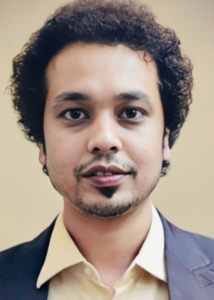
Product manager for Antenna, RF and Radar applications at MathWorks.
Mr. Abhishek Tiwari is the product manager for Antenna, RF and Radar applications at MathWorks. He focuses on products that help system architects and RF/microwave engineers design and develop wireless systems. He collaborates closely with 5G, radar and EW RF engineers, helping them use MATLAB and Simulink for building wireless systems in the most efficient way possible. Prior to joining MathWorks, Abhishek had over nine years of industrial experience in the design and development of hardware and software applications in the Radar domain. He had been a part of the complete lifecycle of projects pertaining to aerospace and defence applications. He had worked for Bharat Electronics Limited (BEL) and Electronics and Radar Development Establishment (LRDE), DRDO two of the prestigious Indian defence organization working in prototyping and producing Radar and Radio systems at scale for around 8 years. He holds a bachelor’s degree in electronics and telecommunication domain from National Institute of Technology, Raipur and Master in Business Administration on leadership and strategy from Indian School of Business, Hyderabad.
Title of the talk:
"RF Design of Wideband mmWave Beamforming Systems"
Abstract:
The current trend for wireless systems to operate at millimetre wave (mmWave) frequencies and over wide bandwidth drives challenging requirements for RF front ends. In this workshop, you will learn how MATLAB and Simulink can be used for modelling RF and mmWave transceivers, performing RF budget analysis, and simulating wideband adaptive architectures. These will include RF components such as amplifiers, matching networks, and antenna arrays operating at mmWave frequencies. Using virtual prototypes, we will simulate wideband transmitter and receiver behaviour including coexistence and interference scenarios along with beam-squinting and antenna coupling. These same virtual prototypes will be used to perform dynamic EVM measurements for different communications standards such as 5G FR2. With practical examples, we will demonstrate how to optimize baseband signal processing compensate for RF impairments, improve overall receiver sensitivity in the presence of interfering signals, and to support multiple communication standards.
Note: No Accommodation will be provided for the Pre-conference workshop participants
Bank Account Details
Please use the following Bank Account to transfer the registration fee and record your transaction ID for further enquiries.
Bank Details
Account Name: Wireless Antenna Microwave Symposium WAMS 2024 – Raghu Engineering College
Bank Name: Federal Bank
Account Number:12350200023245
IFSC: FDRL0001235
Swift code: FDRLINBBIBD
Bank Address: Visakhapatnam
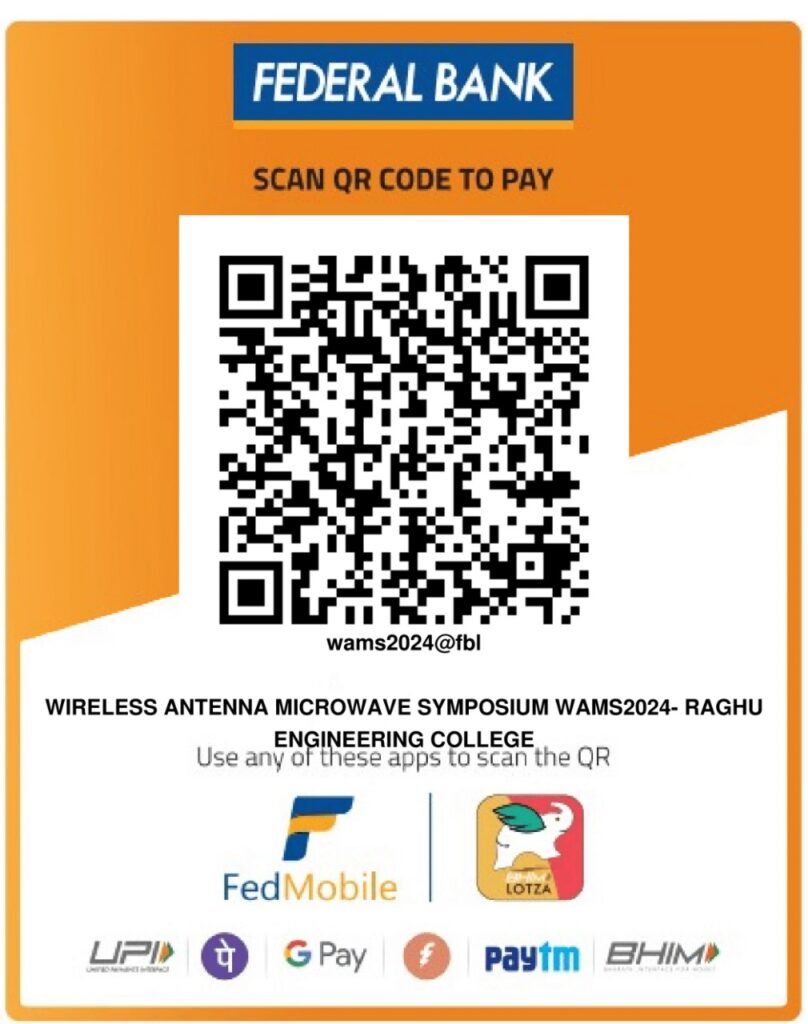
The Conference features Keynotes, Invited Talks by Speakers from various parts of the World. The conference features a Preconference Workshop. Click here for more details
Don't miss this opportunity to enhance your expertise in antenna technology!
For inquiries or additional information, please contact
P. Satish Rama Chowdary (General Chair WAMS 2024)
Antenna Systems for Space Applications at NASA Jet Propulsion Laborator
We are thrilled to announce that Dr. Paolo Focardi, renowned expert in Space Vehicle Antennas and geo-physical image processing at NASA Jet Propulsion Laboratory, will be gracing the 3rd Wireless, Antennas, and Microwave Symposium (WAMS-2024) as a distinguished speaker for our Pre-Conference workshop
Date: 28th February, 2024
Time: 9:30 AM to 5:00 PM
Venue: Raghu Engineering College, Seminar Hall
Registration Fee:
Catering: Lunch and snacks will be provided during the workshop


